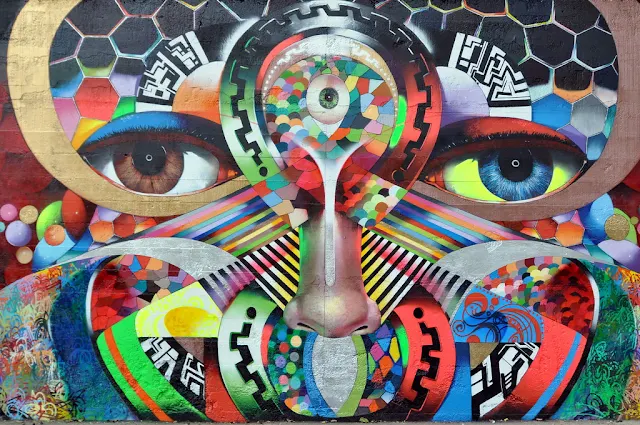Becoming an Artist Today: A Comprehensive Guide
Becoming an artist today is an exhilarating journey filled with boundless opportunities and unique challenges. The contemporary art world is more diverse and dynamic than ever, offering numerous pathways for creative expression and professional success. Whether you aspire to be a painter, sculptor, digital artist, or engage in any other artistic discipline, understanding the landscape and navigating it effectively is crucial. Here’s a comprehensive guide to help you embark on your artistic journey.
1. Finding Your Artistic
a. Explore Various Mediums and Styles: Begin by experimenting with different mediums—painting, drawing, sculpture, digital art, photography, etc. Don’t be afraid to try new techniques and materials. The more you explore, the more likely you are to discover what resonates with you.
b. Study Art History and Contemporary Art: Understanding the history of art and contemporary practices can provide valuable context for your work. Study the works of past masters and current artists to see how they approached their craft and what made their work stand out.
c. Reflect on Your Interests and Experiences: Your personal experiences, interests, and passions are unique to you and can be a rich source of inspiration. Reflect on what matters to you and how you can incorporate those themes into your art.
2. Building Your Skills
a. Formal Education: While formal education is not a prerequisite, attending an art school or taking art courses can provide structured learning, access to resources, and networking opportunities. Degrees in Fine Arts or related fields can also enhance your credentials.
b. Self-Education: Many successful artists are self-taught. Online tutorials, workshops, and art communities offer abundant resources to learn and hone your skills. Platforms like YouTube, Skillshare, and Coursera provide valuable lessons on various artistic techniques and concepts.
c. Practice Regularly: Like any other skill, art requires regular practice. Dedicate time each day or week to create. This consistency helps improve your technique and develop your unique style.
3. Creating a Body of Work
a. Start a Portfolio: Your portfolio is a collection of your best work that showcases your skills, style, and artistic voice. Keep it updated and ensure it reflects the diversity and depth of your abilities.
b. Develop a Signature Style: Over time, strive to develop a signature style that makes your work recognizable. This doesn’t mean limiting yourself, but rather finding a cohesive thread that ties your work together.
c. Explore Themes and Series: Working on thematic projects or series can help you delve deeper into specific subjects and create more impactful work. It also shows your ability to sustain an idea over multiple pieces.
4. Navigating the Art Market
a. Understand the Market: Research the contemporary art market to understand trends, pricing, and what sells. Visit galleries, art fairs, and exhibitions to see what’s popular and where your work might fit.
b. Pricing Your Work: Pricing art can be challenging. Consider factors like the cost of materials, time invested, and your level of experience. Research similar works to get an idea of market rates, and be prepared to adjust your prices as your career progresses.
c. Selling Art Online: Online platforms like Etsy, Saatchi Art, and Artfinder offer artists a way to sell their work to a global audience. Social media platforms like Instagram can also be powerful tools for marketing and selling art.
5. Promoting Your Work
a. Build an Online Presence: A strong online presence is crucial for modern artists. Create a professional website to showcase your portfolio, artist statement, and contact information. Regularly update it with new work and exhibitions.
b. Social Media: Use social media platforms to share your work, process, and inspiration. Instagram, in particular, is popular among artists. Engage with your audience by responding to comments and participating in the art community online.
c. Networking: Attend art events, join local art groups, and participate in online forums to connect with other artists, curators, and potential buyers. Building a network can lead to opportunities for exhibitions, collaborations, and sales.
6. Exhibiting Your Work
a. Enter Competitions and Open Calls: Many galleries and organizations offer competitions and open calls for artists. Participating in these can provide exposure and build your resume.
b. Approach Galleries: Research galleries that align with your style and reach out to them with your portfolio and a professional inquiry. Be prepared for rejection, but persistence is key.
c. Alternative Spaces: Consider exhibiting your work in alternative spaces like cafes, community centers, or pop-up galleries. These venues can offer valuable exposure and new audiences.
Being an artist today requires a blend of creativity, dedication, and strategic thinking. By finding your unique voice, continuously developing your skills, and navigating the art market effectively, you can build a successful and fulfilling career. Remember, the journey is as important as the destination. Embrace the process, stay true to your vision, and let your passion guide you. With perseverance and an open mind, the possibilities for your artistic future are limitless.






.jpg)







No comments:
Post a Comment